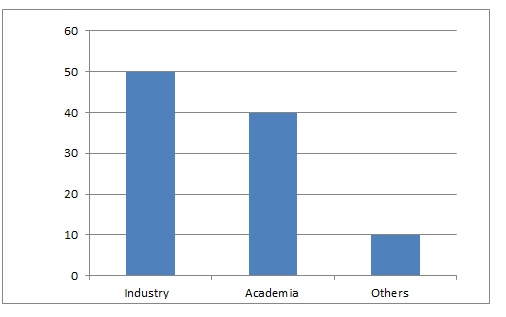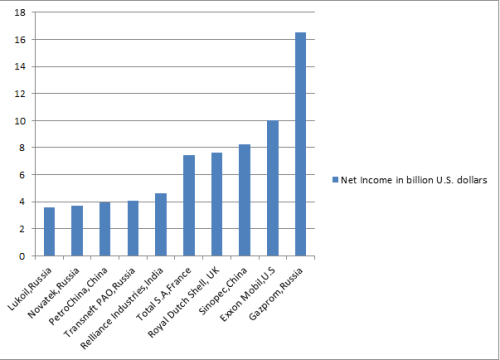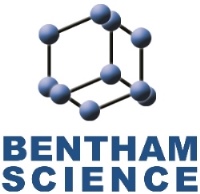Theme: Emerging technologies & scientific advancements in Oil and Gas field
Oil Gas 2018
ConferenceSeries LLC Ltd welcomes you to attend the 10th International Conference & Expo on Reservoir Engineering for Extreme Oil & Gas Environments during Oct 31-Nov 1, 2018, Argentina. We cordially invite all the interested participants in sharing their knowledge, research and gaining the information in the arena of petroleum and its allied areas.
Oil Gas 2018 provides a platform for researcher scholars, scientists and academic people to share and globalize their research work while the participants from industry/ business sectors can promote their products thus felicitating dissemination of knowledge. We anticipate more than 300 participants around the globe with thought provoking keynote lectures, oral and poster presentations. The attending delegates include Editorial Board Members of related journals. The scope of Oil and Gas Congress 2018 is to bring the advancements in the field of petroleum, natural gas and its allied areas.
Importance & Scope
Oil Gas 2018 attains greater global significance as the world economy has been developing with oil as its lifeblood for over a hundred years. The petroleum sector accounts for roughly 45% of GDP and 90% of export earnings, it’s over half if you include natural gas. Oil/gas powers 100% of all transportation, within a few significant figures of rounding error. There is no doubt in my mind whatsoever that modern civilization would collapse in a matter of months if oil stopped flowing. It is hard to imagine industrial operations or even private activities without oil and gas – anywhere in the world.
Targeted Audience
· Oil and Gas Industries
· Geophysicists
· Petroleum Industries
· Oil and Gas Societies and Associations
· Petroleum Engineering Faculty
· Geologists and Geo Scientists
· Petroleum Technology Students
· Oil and Gas Research Scholars
· Professors and Students from Academia
· Oil and Gas Scientists
· Petroleum Analysts
· Chemical Engineering Professors
· Petroleum Chemicals Marketers
Track 1: Pipeline and Storage
In the oil and gas industry transportation and storage relates to the movement of crude oil from the oil fields to petroleum refineries and to storage areas where the petroleum products are stored for distribution and emergency reserves. Oil pipelines are buried and are generally made from carbon steel or plastic tubes.
Today Companies utilize oil storage as a key instrument to build benefits in the worldwide market. Application of most pipelines is to carry inflammable fluids or to operate at medium to high pressures and temperatures, it is imperative that the storage system selection reflects the business requirements.
· Gas Processing & Compression
· Oil Boosting
· Pipeline Integrity Services
· Downstream pipeline
· Gas Production
· Virtual Pipeline
Track 2: Biofuels and Bioenergy
Fuel whose energy is obtained through a process of biological carbon fixation is defined as Biofuel. The role of the biofuel industry is not to replace petroleum diesel completely, but to help for a balanced energy policy with the most benefit. Utilizing biofuels as jet fuel also offers a solution to carbon discharge. Diesel and Gasoline are actually ancient biofuels, but they are defined as fossil fuels because they are produced from decomposed plants and animals that have been buried in the ground for millions of years. Biofuels are similar, except that they are made from plants grown today. Bioenergy is renewable energy that is obtained from materials derived from biological sources. It is a synonym to biofuel.
· Biodiesel
· Biofuels
· Natural Gas Hydrates and its derivatives
· Shale Gas and shale Oil
Track 3: Crude Oil Excavation
Crude oil is found in pores of rocks and Earth’s surface as raw material, that is unprocessed hence should be extracted, processed and separated from its raw materials. Crude oil often called "black gold”, has ranging viscosity and depending on its hydrocarbon composition can vary in color to various shades of black and yellow. By distillation process the oil is heated and separated in different components. Energy Intelligence Group has stated that there exist nearly 200 varieties of crude oil. Lighter products, like butane and other LPG, gasoline, and naphtha are retrieved at the lowest temperatures. Products like jet fuel, kerosene, and distillates are included as mid-range. Sometimes the heaviest substances such as residual fuel oil are recovered at temperatures over 1,000 degrees Fahrenheit.
· Origin
· Oil Traps
· Enhanced Recovery Techniques
· Transportation Facilities
· Refinery Sites
Track 4: Downstream Development and Growth
Downstream operation includes refining of petroleum crude oil, processing, purifying of raw natural gas, and marketing and distribution of products obtained from natural gas and crude oil . This sector reaches the consumers in the form of useable products like gasoline, diesel, jet fuel and even antifreeze and propane
· Crude Petroleum Refining
· Natural Gas Processing
· Contaminants
· Oil and Gas Refining Technologies
· Conventional and Non-Conventional Downstream Technologies
· Commercial and Legal Structures for Downstream
Track 5: Enhanced oil recovery
Enhanced oil recovery is the use of various frameworks for extending the measure of crude oil that can be isolated from an oil field. Enhanced oil recovery is moreover called tertiary recovery. According to the US Department of Energy, there are three basic frameworks for EOR: warm recovery, gas injection, and chemical injection. Sometimes the term quaternary recovery is used to imply additionally created, hypothetical, EOR techniques. Using EOR, 30 to 60 percent, or more, of the supply's one of a kind oil can be extracted, appeared differently in relation to 20 with 40 percent using fundamental and discretionary recovery.
· Oil Recovery Techniques
· CO2 EOR Projects
· Economics Values and Benefits
Track 6: Future of global oil and gas industry
The enormous economic commitment of the oil and gas industry to numerous national economies makes its future of critical significance to the worldwide community. To balance cost challenges against the possible need for new reserves, a leaner and more efficient industry is required both in execution and operation.
· Unconventional extraction methods
· Oil and gas reserves for future generations
· Onshore and Offshore Transactions
· Oil and gas corporate social responsibility
· Pipeline installation
· Nanotechnology safety for health and environment
· Exploration technology
Track 7: Atmospheric impacts of oil and gas
The substantial components of oil and gas are Hydrocarbons that are basically made out of carbon and hydrogen. These segments have wide impact on environment that includes intensification of the greenhouse effect, acid rain, poorer water quality, groundwater contamination. The oil and gas industry may also contribute to loss of biodiversity and the destruction of ecosystems as well. Besides being an important energy source the oil industry holds a major potential of hazards for the environment, and may impact it at different levels: air, water, soil, and consequently all living beings on our planet.
· Climate variation
· Toxicity
· Solid waste
· Thermal pollution
· Volatile organic compounds
· Aerial Emissions
Track 8: Carbon capture and storage
Carbon capture and storage is the method of capturing waste carbonic acid gas (CO2) from massive purpose sources, like fossil fuel power plants, transporting it to storage and depositing in a place where it will not enter the atmosphere. Although CO2 has been injected into geological formations for several decades for various purposes, including EOR, the long term storage of CO2 is a relatively new concept.
CO2 Carbon dioxide can be captured out of air or fossil fuel power plant flue gas using adsorption (or carbon scrubbing), membrane gas separation, or adsorption technologies. Capturing and compressing CO2 may increase the energy needs of a coal-fired CCS plant by 25–40%. Storage of the CO2 is envisaged either in deep geological formations, or in the form of mineral carbonates. Deep ocean storage is not currently considered feasible due to the associated effect of ocean acidification. Geological formations are currently considered the most promising sequestration sites.
Track 9: Hydrocarbon Exploration
Crude oils and natural gases are mixtures of hydrocarbon molecules containing from 1 to 60 carbon atoms. Surface features like oil seeps, natural gas seeps provide basic evidence of hydrocarbon generation. Oil exploration is an expensive and high-risk operation. The primary search for the hydrocarbons often begins with observation of surface terrain. Location of faults at the surface is very important because in reservoir rocks they indicate where potential structure traps may lie beneath the surface.
There are three primary process used to find hydrocarbons in the subsurface: Geophysical, Remote Sensing, and Wildcatting. Today, technological innovation allows more viable and orderly management of fields and better analysis of exploration scopes, reducing the need to drill innumerable exploratory wells saving money and minimizing environmental damage.
· Hydrocarbon Reservoir
· Oil and Natural Gas Formation
· Refining of Oil
· Oil and Gas Restoring
· Refined Oil Pipelines
· Hydrocarbons
Track 10: Midstream operation
The midstream sector involves the transportation of oil and natural gas from the extraction site to the refineries. It is also responsible for treating raw materials to remove impurities such as hydrogen sulfide and water vapor. Removing impurities and compressing the fluids helps maximize the amount of oil and natural gas that can be transported, resulting in maximizing efficiency and profits for companies.
· Distribution of crude oil to refiners
· Storage
· Refining of crude oil
· Fractionation
· Bulk Natural Gas and Oil Transport
Track 11: Nanotechnology in Oil & Gas Industry
Nanotechnology is the use of very small pieces of material, at dimensions between approximately 1 and 100 nanometers. In oil and gas industry nanotechnology can contribute to more effective, less expensive, and more advanced technologies than those that are readily available. One of the most advanced concepts of nanotechnology in oil and gas industry is to enhance oil recovery. Because of greater risk of adapting new technologies and high price, the application in oil and gas industry has not been fully discovered.
· Provide real-time analytics on emulsion characteristics
· Enhance oil recovery
· Deliver new source materials
· Nano sensors for hydrocarbon detection in oil-field rocks
· Geochemical exploration
Track 12: Oil & Gas Technology
The source of technology intended for the oil and gas markets have changed over time. The introduction and commercialization of 3D seismic presents an opportunity to expand upon the time-to-market findings. Today, advanced technologies like digital technologies with the possibility to transform operations and create additional benefits from existing capacity were used.
Companies have begun using 4-D seismic imaging to add a time-lapse dimension to traditional 3-D imaging, enabling them to measure and predict fluid changes in reservoirs. IT Project plays an important role in Oil and Gas sector, Petroleum Geoscience and Pipeline Control.
· Linear program modeling of refineries
· Geospatial analytics
· Data management
· Development of mature oil fields
· Synthetic Oil and Gas
Track 13: Oil Refining and Marketing
The refining process for crude oil follows a regimented process because crude oil is made up of several different hydrocarbons. This process is done to reduce corrosion and fouling of equipment and to prevent poisoning catalysts in processing units. For mechanical applications the crude oil must be sanitized and changed over into products having a practically same composition.. Refinery products are liquefied petroleum gas (LPG), gasoline or petrol, kerosene, jet fuel, diesel oil and fuel oils. Refining is a complicated and technical process involving
· Distillation
· Conversion
· Treatment
Track 14: Organic Geochemistry
Organic geochemistry is a new scientific discipline, primarily used in the process of exploration for hydrocarbons. It enables the determination of rocks, evaluation of their generating potential, and efficiency of their expulsion and detection of migration principle. The historical characterization of reservoir hydrocarbons is achieved by geochemical analyses, correlation and by their transformation of hydrocarbons within accumulations. Application of organic geochemistry helps in identifying the composition of paraffin’s, and diamondoids in the crude and monitors their susceptibility to precipitate fouling agents within the reservoir and production stream can avert formation damage and the clogging of flow line and production equipment. However petroleum geochemistry offers rapid, low-cost evaluation tools to aid in understanding development and production problems.
· Biogeochemistry
· Oil-petroleum geochemistry
· Geochemical cycling
· Chemical oceanography
· Environmental geochemistry
Track 15: Petroleum science and technology
Petroleum Science and Technology bridge the gap between the engineering, the geology and the science of petroleum and natural gas. This field works on the chemical analysis as it covers the character, properties, science, and processing aspects of heavy oil, tar sand bitumen, and residua. It is also address the environmental aspects of production range of petroleum and its recovery, refining, and use. Petroleum science relates to petro physics also and in toxicological studies of petroleum.
· Fuel Technology
· Geotechnical Engineering and Engineering Geology
· Chemical Engineering
· Toxicology
· Petro chemistry
· Advanced technology and modeling
Track 16: Shale gas and oil development
Shale formations across the U.S. have been developed to produce natural gas in small. Shale is a sedimentary rock that is predominantly comprised of consolidated clayâ€sized particles. As these sediments were buried, they were heated and turned into rock and the organic matter was converted into gas and oil which is trapped in the rock. These rocks are often the source rocks for conventional oil and gas fields but have low permeability hence it is difficult to extract hydrocarbons from them directly . Some principle issues for planning consideration for shale gas and oil developments include.
· Air quality and dust
· Noise
· Heritage features
· Site restoration and aftercare
Track 17: Upstream process
The upstream industry finds and produces crude oil and natural gas. Hence it is known as the Exploration and Production (E&P) sector. Upstream sectors deal primarily with the exploration and initial production stages of the oil and gas industry. Exploration for oil and gas is an important part of the upstream sector. Technology is the most essential factor in upstream’s exploration and extraction.
Upstream can be divided into many components, but the main ones we Will touch on are: discovering out and selecting potential and probable oil sites, evaluation of these sites, drilling and grounding exploratory wells, if the wells are deemed economically feasible and recoverable and operating these wells to extract crude oil.
· Distribution of Crude oil to Refineries
· Developers and operations
· Programming for Oil and Gas
Track 18: Safety and Reliability
The Offshore and Onshore Reliability Data (OREDA) in collaboration with the Norwegian Petroleum Directorate which is one of the main fundamental sources for oil and gas industry was established in 1981. Essential target of OREDA is to provide an improved safety and cost effectiveness in design and operation of oil and gas facilities through collection, analysis, maintenance and establishment of a high quality database. The particular creation framework that is chosen must be customized to every one of a kind mix of these components to guarantee safe oilfield advancement. The couple of systematic reviews are preparatory and don't give an enough proof to indisputably figure out whether oil and gas operations cause wellbeing impacts in nearby populations.
· Intellectual Property Rights
· Legal, Fiscal System and Contracts
· Energy Security and Legal Framework
· Personal protective equipment
· Health, Safety, Environment, Quality (HSEQ) Policy and Security
Track 19: Regulations and Ethics
Morals and Regulations in Oil and Gas industry covers an extensive variety of business practices and methodology which incorporates Commercial and Legal issues, Legal Structures, Health and Safety, Environment, Quality (HSEQ) Policy and Security, Uncontrolled Shale Gas Emissions, Legal, Revenue System and Contracts, Energy Security and Geopolitics of Oil and Gas and Intellectual Property Rights.
· Measuring the performance of critical control systems
· Personal protective equipment
· Occupational Safety and Health Management System
· Oil spills and Gas Explosion Management
Track 20: Oil Formation
The general definition of oil includes classes of chemical compounds that may be unrelated in structure, properties, and uses. They are used for food, fuel, medical purposes, lubrication etc. there are two types of oils: Organic oils and Mineral oils. Organic oils are produced in remarkable diversity by plants, animals, and other organisms through natural metabolic processes.
Crude oil, or petroleum, and its refined components, collectively termed petrochemicals, are crucial resources in the modern economy.
Track 21:Carbon capture and storage
Carbon capture and storage is the method of capturing waste carbonic acid gas (CO2) from massive purpose sources, like fossil fuel power plants, transporting it to storage and depositing in a place where it will not enter the atmosphere. Although CO2 has been injected into geological formations for several decades for various purposes, including EOR, the long term storage of CO2 is a relatively new concept.
CO2 can be captured out of air or fossil fuel power plant flue gas using adsorption (or carbon scrubbing), membrane gas separation, or adsorption technologies. Capturing and compressing CO2 may increase the energy needs of a coal-fired CCS plant by 25–40%. Storage of the CO2 is envisaged either in deep geological formations, or in the form of mineral carbonates. Deep ocean storage is not currently considered feasible due to the associated effect of ocean acidification. Geological formations are currently considered the most promising sequestration sites.
Track 21: Mining & Materials Engineering
Materials processing is defined as the series of steps used in the manufacture of raw-materials into finished goods. The operations involve a succession of industrial processes with various mechanical or chemical procedures, usually produced in large quantities or batches. The processes used to convert raw materials into finished products perform one or both of two major functions: first, they form the material into the desired shape; second, they alter or improve the properties of the material. Extracting minerals and producing metals is difficult. Also, mining and materials companies are often pursuing resources in remote, hazardous locations. Safety is always a top priority, as companies strive to reduce harm to employees as well as the environment. Cost control and better asset management are critical as well.
· Population and environment impact
· Waste treatment and materials
· Materials flows
· Mineral determination
Related Societies
Petroleum Society of Canada (PETSOC), Canada; Association of Oil and Gas operators (AOGO), India; International Society of Offshore and Polar Engineers (ISOPE), California, USA; Oklahoma Oil & Gas Association (OOGA), United States; Korea Oil & Petroleum Association, South Korea; Brazilian Institute of Oil and Gas, Brazil; Yorkshire Geological Society, England; Geological Society of Japan, Japan; Royal Geological and Mining Society, Netherlands; Australian Institute of Petroleum, Australia; American Rock Mechanics Association (ARMA), USA.
Related Conferences
9th Annual Congress and Expo on Biofuels and Bioenergy, April 16-17, 2018 Dubai, UAE; 2nd International Conference on Renewable Energy and Resources, August 27-28, 2018, Boston, USA; 5th World Congress on Chemical Engineering and Catalysis, August 27-28, 2018 Tokyo, Japan; 10th Asia Pacific Congress on Oil and Gas ,September 17-19, 2018 Beijing, China; 6th Asia Pacific Congress on Chemical and Biochemical Engineering, September 19-20, 2018 Macau, Hong Kong; World Congress on Biopolymers and Polymer Chemistry, May 28-30, 2018 Osaka, Japan; 7th World Congress on Petrochemistry and Chemical Engineering, November 13-14, 2017 Atlanta, Georgia, USA.
Summary of Conference
Oil Gas 2018 will be the leading forum for all recent advancements in geology and geosciences. It will place a forum where the foremost academic scientists, geologists, young researchers from all over the world together where they will to exchange and share their experiences and research results. Throughout the two-day conference, attendees will hear from International leaders on how technology is changing day-to-day business throughout the industry. It provides a unique platform for networking with peers and learning from speakers that are experts in oilfield technology. We welcome all the contributors and participants to join us at the Oil Gas 2018, where you will be sure to have a meaningful experience with experts from around the world. Participants will have a platform to learn and implement key findings from real-life case studies which will also be helpful in expanding your customer base and do business with the key decision makers in your field and share ideas and grow your network with leaders in oil and gas exploration and production, drilling, refining, and pipelines. Resolve issues within the sphere of compliance maintenance.
Scope and Importance:-
Oil Gas attains greater global significance as the world economy has been developing with oil as its lifeblood for over a hundred years. The petroleum sector accounts for roughly 45% of GDP and 90% of export earnings, it’s over half if you include natural gas. Oil is directly responsible for about 2.5% of world GDP, but accounts for 1/3rd of humanity’s primary energy supply (>5 terawatts out of 15 terawatts total). It’s over half if you include natural gas. Oil/gas powers 100% of all transportation, within a few significant figures of rounding error. It is hard to imagine industrial operations or even private activities without oil and gas – anywhere in the world. Not only do they supply energy for heat and power, they are also found in everyday items, such as medicines, plastics, and clothing.
About Venue:
Argentina is a federal republic in the southern portion of South America. Argentina is the eight-largest country in the world, the second largest in Latin America. Argentina claims sovereignty over part of Antarctica, the Falkland Islands, and South Georgia and the South Sandwich Islands. The country is one of the G-15 and G-20 major economies of the world, and a founding member of the UN, WBG, WTO and OAS. Argentines have three Nobel Prizes laureates in the Sciences. Well-integrated into Argentine agriculture, half of the industrial exports have rural origin. In Argentina manufacturing accounted for 20.3% of GDP—the largest goods-producing sector in the nation's economy.
Argentina's nuclear programme has been highly successful. In 1957 Argentina was the first country in Latin America to design and build a research reactor with homegrown technology, the RA-1 Enrico Fermi. The most popular sport in Argentina is Football. The US Central Intelligence Agency (CIA) reports that in 2005 Argentina's gross domestic product (GDP) was estimated at $537.2 billion.
Argentina had the third-largest proven natural gas reserves in South America, exceeded only by Venezuela and Mexico. In 2016, Argentina was the largest dry gas producer and the fourth-largest petroleum and other liquids producer in South America, according to the BP Statistical Review of World Energy 2017. As of December 2016, Argentina held 2.4 billion barrels of proved crude oil reserves, according to Oil and Gas Journal (OGJ). In 2016, total oil production was 693,000 barrels per day (b/d), of which 489,000 b/d was from crude oil and 112,000 b/d was from natural gas plant liquids. Crude oil production has declined overall in Argentina in the past two decades as a result of conventional assets maturing and a lack of sufficient investment in exploration and development. The largest natural gas-producing basins include Neuquén, Austral, and Noroeste. Together, these three basins account for nearly 85% of the country’s natural gas production. Argentina had 11 refineries with a combined 634,000 b/d of crude oil refining capacity, about half of which is controlled by YPF, according to the OGJ.
Conference Highlights
· Pipeline and Storage
· Biofuels and Bioenergy
· Crude Oil Excavation
· Downstream Development and Growth
· Enhanced oil recovery
· Future of global oil and gas industry
· Atmospheric impacts oil and gas
· Gas Monetization
· Hydrocarbon Exploration
· Midstream operation
· Nanotechnology in Oil & Gas Industry
· Oil & Gas Technology
· Oil Refining and Marketing
· Organic Geochemistry
· Petroleum science and technology
· Shale gas and oil development
· Upstream process
· Safety and Reliability
· Regulations and Ethics
Why to Attend???
Oil Gas 2018 provides a podium to globalize the research by establishing a dialogue amidst industries and academic organizations and knowledge transmission from research to industry. The conference will be the leading forum for all recent advancements in Oil and Gas Fields. It provides a unique platform for networking with peers and learning from speakers that are experts in oil field technology.
1. To learn about key issues in the industry as a whole (and your area of interest in particular) as articulated by practitioners.
2. To meet people and organizations addressing these same key issues.
3. To meet people with whom you’ve established a relationship on social media.
4. To initiate relationships with others that you can continue by social media and/or meetings in person.
5. To learn about job, internship, project and other work-based possibilities.
6. To learn about fellowship and grant opportunities relevant to your area(s) of interest.
7. To gain insight into the experiences of others who face challenges similar to yours.
8. To learn about publications and other resources relevant to your area(s) of interest.
Target Audience:
· Oil and Gas Industries
· Geophysicist
· Petroleum Industries
· Oil and Gas Societies and Associations
· Petroleum Engineering Faculty
· Geologists and Geo Scientists
· Petroleum Technology Students
· Oil and Gas Research Scholars
· Professors and Students from Academia
· Oil and Gas Scientists
· Petroleum Analysts
· Chemical Engineering Professors
· Petroleum Chemicals Marketers
Societies/Industries/Universities Associated with Oil and Gas:-
· US Oil & Gas Association
· Texas Oil & Gas Association
· IOGP - International Association of Oil and Gas Producers
· Oil & natural gas company in Singapore
· Independent Oil and Gas Association of New York (IOGA of NY) (IOGANY)
· Independent Petroleum Association of America
· UK Petroleum Industry Association Ltd
Major Oil and Gas Industries in US
· Exxon Mobil
· Chevron
· ConocoPhillips
· Occidental Petroleum
· EOG Resources
· Anandarko Petroleum
· Phillips 66
· Valero Energy
· Marathon Petroleum
Target Audience:
Industry 50%
Academia 40%
Others 10%
Figure 1: Target Audience
Universities in USA:
· University of Texas at Austin
· Texas A&M
· Colorado School of Mines
· University of Oklahoma Norman Campus
· University of Tulsa
· Louisiana State Agricultural & Mechanical College
· Pennsylvania State University (PSU)
· University of Southern California
· Texas Tech
· Missouri University of Science and Technology
· Stanford University
· West Virginia University
· University of Alaska
· University of Houston
· University of Louisiana
Glance at Global Oil Market:
The Global Oil and Gas advertise investigation says the chemicals that are eaten up in the investigation, penetrating and era of oil and gas thoroughly. It is like manner highlights creating and contracting partitions, mechanical challenges that the business is facing, and possible responses for those troubles. Figure gave through 2021 in this manner. The overall market for oilfield gets ready chemicals should reach $29.6 billion by 2021 from $26.9 billion in 2016 at a compound yearly advancement rate (CAGR) of 2%, from 2016 to 2021.The overall market for oilfield plan chemicals came to about $7.4 billion in 2013. This market is required to create to $7.7 billion in 2014 and about $9.7 billion in 2019, with a compound yearly development rate (CAGR) of 4.6%.
Global capital expenditure by region for onshore pipelines, 2013–2017.
Global expenditure is expected to reach USD 216 billion over the next 5 years, increasing by 12% compared with the previous 5-year period with 270 834 km of onshore pipeline expected to be installed. The use of pipes ranging from 24- to 41-in. diameter and more than 41-in. diameter will increase steadily, accounting for 45% and 31% of total kilometers installed, respectively. The trend toward the increased adoption of natural gas in the global energy mix is driving the increase in pipe diameter. Increasing gasification is shaping the long-term demand for pipes. With an anticipated 35% increase in global energy demand over the next 20 years, the role of natural gas is expected to account for 26% of total energy consumption by 2030.
2017 ranking of the leading global gas and oil companies based on net income (in billion U.S. dollars)
This statistic depicts the 2017 ranking of the global top ten oil and gas companies based on net income. The values are based on the 2017 Financial Times Global 500 list. The Russian company Gazprom was ranked first, with a total net income of approximately 16.53 billion U.S. dollars.
|
Petrochemistry 2016 Report Thanks for attending Petrochemistry 2016 Another Petrochemistry Conference has been successfully completed - The 5th edition – and we must say Thanks to the attendees, Crowne Plaza Phoenix Airport Staff, and theOrganizing Committee and everyone else that helped to make this 5th World Congress on Petrochemistry and Chemical Engineering with the theme: Enabling Unconventional Resources: Ensuring Future a successful conference. To Attendees, We hope that you obtained the kind of advance technical information in the arena of Petrochemistry and Chemical Engineering that you were seeking, and that your role in the field has been enhanced via your participation. We hope that you were able to take part in all the sessions and take advantage of the tremendous advancements in Petrochemistry and Chemical Engineering that scientists are working with. The meeting covered various sessions, in which the discussions included the scientific tracks: · Geology & Exploration · Reservoir Characterisation · Drilling & Well Operations · Process Technology · Chemical Applications · Enhanced Oil & Gas Recovery · Pipelines & Transportation · Onshore/Offshore Support · Upstream/Downstream & Midstream Integration · Unconventional Resources · Gas Supply & Gas Technology · Sustainable Energy · Health, Safety, and Environment · Polymer Chemistry and Applications · Crude and Brent oil prices · Entrepreneurs Investment Meet · Separation Process The Keynote presentations were given by: · Russell R. Chianelli | University of Texas El Paso | USA · Zulkhair Mansurov | Institute of Combustion Problems | Kazakhstan · Mohammad Kamil | Aligarh Muslim University | India · Tohru Setoyama | Mitsubishi Chemical Corporation | Japan Session Chair · Rajendirana Adimoolam, Bharat Petroleum Corporation Ltd, India · Mohammad Kamil, Aligarh Muslim University, India
Bookmark your dates: We hope to see you at Oil Gas 2018, Argentina, USA during Oct 31-Nov 1, 2018 Meet again @ Oil Gas 2018
Organizing Committee |
Conference Highlights
- Oil Refining and Marketing
- Carbon capture and storage
- Organic Geochemistry
- Nanotechnology in Oil & Gas Industry
- Shale gas and oil development
- Petroleum science and technology
- Midstream operation
- Safety and Reliability
- Upstream process
- Downstream Development and Growth
- Atmospheric impacts of oil and gas
- Enhanced Oil Recovery
- Regulations and Ethics
- Future of global oil and gas industry
- Oil and Gas Technology
- Pipeline and storage
- Biofuels and Bioenergy
- Crude Oil Excavation
- Hydrocarbon Exploration
- Oil Formation
- Mining & Materials Engineering
To share your views and research, please click here to register for the Conference.
To Collaborate Scientific Professionals around the World
| Conference Date | Oct 31-Nov 1, 2018 | ||
| Sponsors & Exhibitors |
|
||
| Speaker Opportunity Closed | Day 1 | ||
| Poster Opportunity Closed | Click Here to View | ||
Useful Links
Special Issues
All accepted abstracts will be published in respective Our International Journals.
Abstracts will be provided with Digital Object Identifier by





























